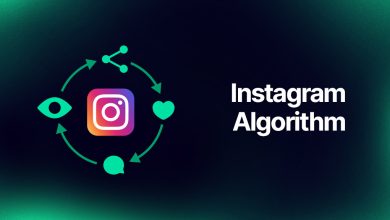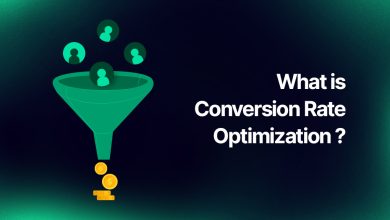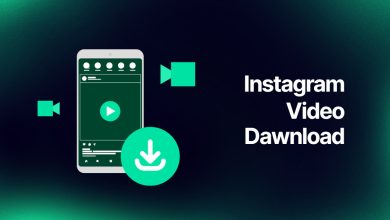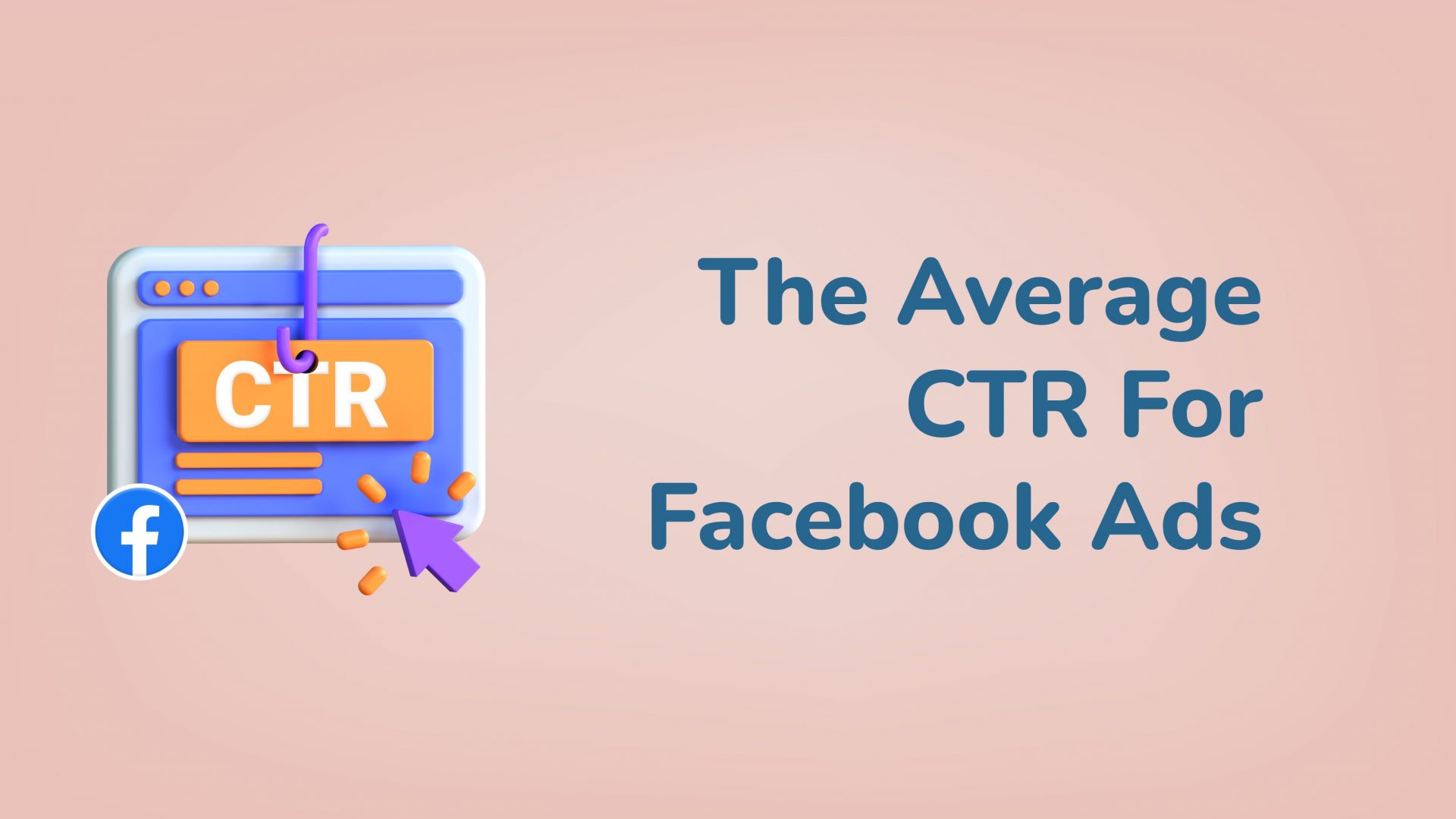How Much Do Facebook Ads Cost in 2025?
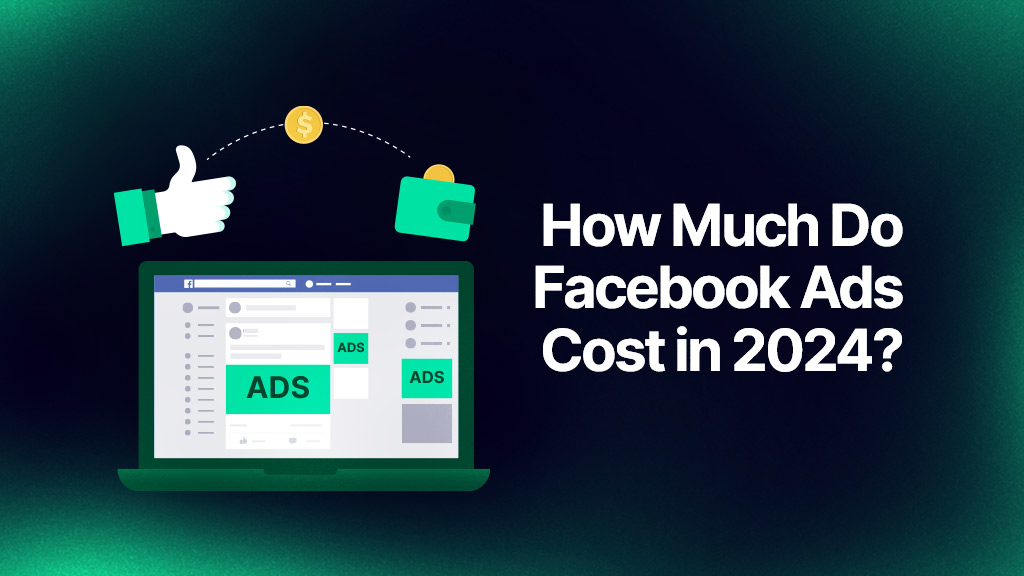
Table of Contents
- How Does the Facebook Ad Auction Work?
- How Much Do Facebook Ads Cost?
- What Determines Your Facebook Ad Costs, and How to Reduce Them
- Final: Is It Worth Paying for Ads on Facebook?
As we move further into the digital age, Facebook remains a leading force in social media advertising. Suppose you’re planning to advertise on Facebook. In that case, you may wonder ‘How much do Facebook ads cost?‘. Understanding the cost of Facebook ads is important for businesses looking to allocate their marketing budgets effectively.
In 2025, several factors influence the cost of advertising on Facebook, including competition, ad placement, target audience, and the type of ad campaign. This article aims to provide a comprehensive breakdown of Facebook ads cost , helping you precisely plan your advertising strategy.
In the following sections, we’ll look at the detailed costs associated with different types of Facebook ads and provide strategies for managing and reducing these costs in 2025. Whether you’re looking to campaign optimization, drive traffic, generate leads, or boost conversions, having a clear understanding of Facebook ad costs will allow you to make smarter marketing investments.
How Does the Facebook Ad Auction Work?
Facebook’s ad auction system determines which ads are shown to users and at what cost. It ensures that ads are relevant to users and cost-effective for advertisers. Understanding this process is essential for optimizing Facebook ad campaigns and maximizing your return on investment. Here’s how the Facebook ad auction works:
When you create a Facebook ad, it enters an auction with other ads targeting the same audience. The auction determines which ad gets shown based on the total value score, which combines your bid, estimated action rates, and ad quality. The ad with the highest total value score wins and is displayed to the user. Importantly, you don’t pay your maximum bid; you pay slightly more than the next highest bid, ensuring cost efficiency.
How Much Do Facebook Ads Cost?
Facebook advertising costs can vary widely, influenced by factors such as ad objectives, industry, competition, and audience targeting. To manage your ad budget effectively, it’s important to understand the typical costs associated with different types of Facebook ads. Here’s a breakdown of the key cost metrics:
Facebook Ads Cost per Click (CPC)
Also, targeting very specific or competitive audiences can drive up CPC as more advertisers compete for the same users. Higher quality and more relevant ads generally achieve lower CPCs due to better engagement rates.
Facebook Ads Cost per 1000 Impressions (CPM)

Cost per 1000 impressions (CPM) indicates the cost to show your ad 1,000 times. The average CPM on Facebook ranges from $5.00 to $12.00. Several factors affect CPM. Ads placed in high-visibility areas like the News Feed typically have a higher Facebook cost per impression than those in Stories or less prominent spots.
Also, reaching broader audiences generally results in lower CPMs, while niche audiences may incur higher costs. Due to higher competition, CPM can increase during peak advertising periods, such as the holiday season.
Facebook Ads Cost per Engagement (CPE)
Cost per engagement (CPE) measures the cost of user interactions like likes, comments, shares, or video views. The average CPE for Facebook ads varies based on factors like ad type and audience.
Engagement depth affects pricing likes and views tend to cost less, while shares and comments may be higher. A higher average Facebook engagement rate can help reduce CPE, as ads with strong interaction naturally reach more users with lower costs.
Facebook Ads Cost per Lead (CPL)
Cost per lead (CPL) is particularly important for campaigns focused on generating leads. The average cost per lead Facebook advertisers see typically ranges from $5 to $30. This Facebook advertising cost can differ based on several factors. Simple lead forms usually result in lower CPLs compared to more detailed forms. Also, attractive offers or incentives can improve lead generation efficiency and lower CPL.
Facebook Ads Cost per Like
Cost per like measures the expense of acquiring new followers for your Facebook page. The cost per like typically ranges from $0.20 to $1.00. This Facebook ad cost can differ based on several factors.
Broader audiences often result in lower costs per like, while niche audiences can be more expensive. Also, engaging content that connects well with the audience tends to attract likes at a lower cost.
Facebook Ads Cost per Download
For app marketers, cost per download is an important metric. The average CPI Facebook ads metric shows that the cost per download ranges from $1.50 to $5.00. Several factors affect Facebook ads cost per download. Apps in competitive categories, such as gaming or finance, often face higher costs per download. Also, ads that clearly communicate the app’s value and features tend to achieve lower costs per download.
Understanding these Facebook ad cost metrics allows you to plan and optimize your Facebook ad campaigns effectively. By monitoring these costs and adjusting your strategies accordingly, you can ensure that your advertising efforts remain both efficient and impactful.
What Determines Your Facebook Ad Costs, and How to Reduce Them

Facebook ad costs are influenced by a variety of factors, ranging from your target audience to the time of year. Understanding these elements can help you define how much does it cost to advertise on Facebook. Also, you can manage and reduce your ad expenses while optimizing campaign performance. Here’s a closer look at what affects your Facebook ad costs and strategies to minimize them:
Target Audience
Your target audience influences Facebook ad costs significantly. Your audience’s composition, size, and specificity can affect how much does it cost to advertise on Facebook. Here’s how the target audience impacts costs and strategies to optimize audience targeting:
How Target Audience Affects Facebook Ad Costs
- Size: Larger audiences typically result in lower costs per click (CPC) or per impression (CPM) due to less competition. However, they may lead to lower engagement and conversion rates.
- Specificity: More specific, narrowly defined audiences tend to be more expensive because they attract more competition. However, these audiences can lead to higher conversion rates due to better alignment with user interests.
- Competition: Highly competitive audiences, such as those interested in popular or high-value items, often have higher Facebook ad prices.
- Behavior: Audiences with high engagement and responsiveness can lead to lower costs as ads perform better.
Strategies to Optimize Audience Targeting
- Use Advanced Targeting: Target your ads precisely by taking advantage of demographics, interests, and behaviors. Custom and lookalike audiences can help reach users who are more likely to convert.
- Segment Audiences: Divide large audiences into smaller segments to customize ads for better relevance and engagement.
- Test Audiences: Perform A/B tests to find the most responsive audience segments and allocate more budget to them.
- Exclude Non-Relevant Users: Use exclusion targeting to avoid showing ads to users unlikely to engage or convert, reducing wasted ad spend.
- Update Regularly: Refresh your audiences periodically to keep them relevant and aligned with current marketing goals.
Optimizing your target audience can effectively reduce Facebook ad costs. By using detailed targeting options, segmenting and testing audiences, and continually refining your strategy, you can lower expenses and improve ad performance.
Placement
Placement refers to where your ads appear across Facebook’s family of apps and services, such as the News Feed, Stories, Instagram, and the Audience Network. Ad placement significantly impacts Facebook ad costs, with each location having different visibility, engagement rates, and pricing.
How Placement Affects Costs
- Visibility: High-visibility placements, like the News Feed, often have higher costs due to their prime positioning and better engagement rates.
- Engagement Rates: Placements with higher engagement rates, such as Stories or In-Stream Videos, might cost more per impression but can lead to more interactions and conversions.
- Ad Format Compatibility: Some placements work better with certain ad formats. For example, video ads might perform better in Stories or In-Stream placements, while static image ads might be more effective in the Right Column.
- Competition: Costs can vary depending on how many advertisers are competing for the same placements. High-competition placements can drive up prices.
- Ad Fatigue: Certain placements may experience ad fatigue more quickly, where users see the same ads repeatedly, leading to decreased effectiveness and increased costs over time.
Strategies to Optimize Placement
- Use Automatic Placements: Allow Facebook to automatically choose placements. This approach uses Facebook’s algorithm to optimize for the best cost and performance across available placements.
- Manual Placement Testing: Test different placements manually to determine which ones deliver the best performance for your specific campaign goals.
- Focus on High-Performing Placements: Once you identify which placements deliver the best results, allocate more of your budget to those areas. For example, if video ads perform well in Stories, prioritize that placement.
- Diversify Placements: Spread your ads across multiple placements to reduce reliance on any single one and avoid ad fatigue. This can also help in finding cost-effective opportunities you might otherwise miss.
- Adjust Formats for Placement: Tailor your ad formats to the strengths of each placement. For instance, create vertical videos for Stories and square images for Instagram Feed.
Choosing the right placements is important for managing Facebook ad costs effectively. Utilizing automatic placements, testing manually, and tailoring ad formats can help you find the most cost-efficient options for your campaign. Regular analysis and strategic allocation across placements ensure that you maximize engagement while keeping Facebook ad prices under control.
Location

Location targeting in Facebook ads refers to the geographical areas where your ads are shown. The cost to advertise on Facebook can vary significantly based on the regions or countries you target.
How Location Affects Costs
- Regional Demand: High-demand areas, such as major cities or economically affluent regions, often have higher ad costs due to more advertisers competing for the same audience.
- Local Competition: Costs can increase in areas with many local businesses advertising, driving up competition.
- Economic Factors: Advertisers targeting wealthier regions may experience higher Facebook ad costs due to the potential for greater purchasing power and more competitive bidding.
- Cultural Relevance: Ads tailored to the specific interests and cultural context of a location can perform better, but may also cost more due to the need for customized messaging.
Strategies to Optimize Location Targeting
- Focus on Key Markets: Concentrate your budget on locations where your product or service is most relevant or where you have seen the best performance historically.
- Exclude High-Cost Areas: Avoid or limit targeting in regions with high advertising costs unless they are crucial to your campaign.
- Use Geo-Targeting: Tailor your ads to specific regions to increase relevance and engagement. Adjust ad content to resonate with local audiences.
- Adjust Based on Performance: Continuously monitor performance data by location and shift budget to regions where ads perform best in terms of cost-effectiveness and conversions.
- Use Location-Specific Offers: Create special offers or promotions targeted to specific regions to boost engagement and conversion rates in those areas.
Location targeting can greatly influence Facebook ad costs. By focusing on key markets, excluding high-cost regions, using geo-targeting, and adjusting based on performance, you can optimize your ad spend and improve campaign effectiveness. Tailoring ads to specific locations can help maximize engagement and reduce unnecessary expenses.
Bidding Strategy
Your bidding strategy on Facebook determines how much you’re willing to pay for desired outcomes like clicks, impressions, or conversions. The approach you choose can significantly impact Facebook ad costs and overall campaign performance.
How Bidding Strategy Affects Costs
- Type of Bidding: Facebook offers different bidding strategies, such as manual, automatic, and value optimization bidding. Each affects how costs are managed and what you pay for ad placements.
- Bid Control: Manual bidding allows for precise control over maximum costs, while automatic bidding uses Facebook’s algorithms to optimize spending for best results.
- Competition: The level of competition for your target audience impacts how much you need to bid to win placements, especially in competitive markets.
- Bid Adjustments: The ability to adjust bids based on performance can help control Facebook ads costs and maximize ROI.
Strategies to Optimize Bidding
- Start with Automatic Bidding: Begin with automatic bidding to let Facebook optimize for the best results within your budget, then analyze performance data.
- Transition to Manual or Cost Cap: As you gather data, consider moving to manual bidding or cost cap strategies to gain more control and reduce costs.
- Set Realistic Caps: Use bid caps to manage costs without overly restricting ad delivery. Experiment with different levels to find the optimal bid.
- Monitor and Adjust: Continuously monitor your campaign’s performance and adjust bids based on metrics like CPC, CPM, and CPA.
- Use Bid Multipliers: Adjust bids based on audience segments, placements, or times of day to improve cost efficiency.
Choosing the right bidding strategy is essential for managing Facebook ad costs effectively. Automatic bidding offers ease and optimization, while manual and cost-cap strategies provide greater control. Regular monitoring, testing, and adjustments ensure you achieve the best balance between cost and performance.
Ad Format

Ad format on Facebook refers to the type of ad you choose, such as image, video, carousel, or collection. Each format has unique characteristics that can impact your ad’s performance and Facebook ad costs.
How Ad Format Affects Costs
- Engagement Rates: Different ad formats have varying levels of engagement. Videos and interactive formats often engage users better than static images, potentially leading to higher costs but also greater effectiveness.
- Production Costs: Some formats, like videos or interactive ads, may have higher production costs compared to simpler formats like images or text ads.
- User Experience: Formats that improve user experience, such as instant experiences (previously canvas ads), can lead to better performance metrics and lower costs over time.
Strategies to Optimize Ad Format
- Align Format with Goals: Choose ad formats that best align with your campaign objectives. For instance, use video ads for brand awareness and image ads for quick promotions.
- Test Multiple Formats: Experiment with different formats to see which ones resonate best with your audience and perform the best cost-performance ratio.
- Optimize for Placement: Ensure your ad formats are suited to the placements you are using. For example, vertical videos for Stories and square images for the News Feed.
- Reuse Content: Repurpose existing content across different ad formats to save on production costs and maintain consistency in your messaging.
- Monitor Performance: Regularly analyze the performance of each ad format to identify which offers the best ROI and adjust your strategy accordingly.
Choosing the right ad format is important for effective Facebook advertising. Aligning formats with campaign goals, testing various options, and optimizing for placements can reduce costs and improve performance. By repurposing content and monitoring performance, you can create engaging ads that fit your budget and maximize ROI.
Campaign Objective
The campaign objective in Facebook ads defines the main goal of your advertising efforts, such as brand awareness, lead generation, or conversions. This choice directly influences how your ads are optimized, displayed, and how ad costs are calculated.
How Campaign Objective Affects Costs
- Optimization for Outcomes: Facebook optimizes your ad delivery based on your chosen objective. Different objectives prioritize various metrics, such as clicks, impressions, or conversions, each with its own cost implications.
- Audience Targeting: Objectives impact who sees your ads. For example, selecting lead generation targets users more likely to provide contact information, while conversions focus on those likely to complete purchases, often affecting the cost per result.
- Measurement Metrics: Costs are calculated differently based on objectives. Awareness campaigns might measure cost per thousand impressions (CPM), while conversion campaigns focus on cost per acquisition (CPA).
Strategies to Optimize Campaign Objective
- Align Objective with Goals: Choose the objective that best matches your marketing goals. For brand exposure, use awareness; for driving sales, choose conversion.
- Use Custom Audiences: For consideration and conversion objectives, leverage custom and lookalike audiences to target users likely to complete desired actions.
- Optimize Budget Allocation: Allocate the budget based on the objective’s expected ROI. Higher budgets might be justified for conversion campaigns due to their direct revenue impact.
- Test and Iterate: Experiment with different objectives across campaigns to identify which yields the best cost-performance balance for your business goals.
Selecting the right campaign objective is critical for optimizing Facebook ad costs and achieving your marketing goals. By aligning objectives with your goals, tailoring creatives, and using audience data effectively, you can optimize performance and control expenses. Regular testing and adjustment ensure your campaigns remain effective and cost-efficient.
Ad Relevance Diagnostics
Ad Relevance Diagnostics on Facebook provide insights into how relevant your ads are to your target audience. They include metrics such as Quality Ranking, Engagement Rate Ranking, and Conversion Rate Ranking, which collectively influence your Facebook ad costs and performance.
How Ad Relevance Diagnostics Affect Costs
- Quality Ranking: Measures the perceived quality of your ad compared to others competing for the same audience. A higher quality ranking often results in lower costs as Facebook prioritizes higher-quality ads.
- Engagement Rate Ranking: Compares your ad’s expected engagement rate (likes, shares, comments) to that of other ads. Better engagement can reduce costs by improving ad delivery efficiency.
- Conversion Rate Ranking: Assesses your ad’s ability to drive conversions relative to similar ads. Higher rankings can lead to reduced costs per conversion and better ROI.
Strategies to Optimize Ad Relevance Diagnostics
- Refine Targeting: Ensure your ads are reaching the right audience by using detailed targeting options and creating custom audiences.
- Improve Ad Quality: Invest in high-quality visuals and compelling ad copy. Use A/B testing to find the most effective creatives.
- Focus on Conversions: Align ad content with conversion goals. Make sure your landing pages are optimized and relevant to the ad content.
- Monitor Diagnostics: Regularly check your Ad Relevance Diagnostics in Facebook Ads Manager. Use the insights to make data-driven adjustments to your campaigns.
- Adapt Based on Feedback: Use user feedback and engagement data to refine your ads continuously. Address negative feedback and adjust strategies accordingly.
Ad Relevance Diagnostics are important for understanding and optimizing the effectiveness of your Facebook ads. By focusing on quality, engagement, and conversion rates, and refining your targeting and creatives, you can improve ad relevance, reduce Facebook ad costs, and enhance overall campaign performance.
Season or Time of Year

The season or time of year can significantly impact Facebook ad costs due to variations in user behavior and advertising competition throughout the calendar.
How Seasonality Affects Costs
- Increased Competition: During peak advertising seasons, such as holidays or major shopping events, the demand for ad space increases. This leads to higher costs as more advertisers compete for the same audience.
- User Engagement: User behavior and engagement vary by season. For example, retail ads may perform better during the holiday season, while travel ads might see higher engagement during the summer.
- Campaign Goals: Seasonal campaigns often have different objectives (e.g., Black Friday sales vs. summer promotions), impacting costs and strategies.
Strategies to Optimize Seasonal Ad Costs
- Plan Ahead: Anticipate peak seasons and plan your ad campaigns well in advance. Secure ad placements early to avoid last-minute price hikes.
- Adjust Budgets: Allocate higher budgets for peak seasons when increased spending is expected to drive better results. Conversely, consider reducing budgets during low-demand periods.
- Seasonal Creatives: Develop ad creatives tailored to the season or event, making them more relevant and engaging for your audience.
- Flexible Scheduling: Use dayparting or adjust your ad schedules to run ads during optimal times when user engagement is highest, reducing unnecessary spending during off-hours.
Seasonal variations can have a significant impact on Facebook ad costs. By understanding the effects of holidays, shopping events, and seasonal trends, and implementing strategies such as early planning, budget adjustments, and seasonally relevant creatives, you can optimize your ad spending and increase campaign effectiveness throughout the year.
Time of Day
The time of day when your ads are shown on Facebook can significantly affect their performance and costs. User activity patterns, competition, and ad effectiveness fluctuate throughout the day, influencing how and when your ads should be delivered.
How Time of Day Affects Costs
- User Activity: User engagement varies by time of day. Ads shown during peak activity times can receive higher engagement but may also face more competition and higher costs.
- Ad Competition: Costs can rise during times when more advertisers target the same audience, such as during business hours or prime evening times.
- Conversion Rates: The likelihood of conversions can differ throughout the day. Understanding when your target audience is most likely to convert can help in optimizing ad spend.
Strategies to Optimize Ad Timing
- Dayparting: Implement dayparting (scheduling ads for specific times of day) to ensure your ads run during the most cost-effective times for your audience.
- Use Facebook Insights: Leverage Facebook’s insights tools to analyze when your audience is most active and engaged. Adjust your ad delivery accordingly.
- Automated Rules: Set up automated rules in Facebook Ads Manager to adjust bids or pause campaigns during certain times of the day based on performance metrics.
- Flexible Budgeting: Allocate more budget to times of day when ads perform best, and reduce spending during less effective periods.
Timing your ads effectively can lead to better performance and cost efficiency. By understanding peak engagement times, user behavior patterns, and conversion windows, and implementing strategies like dayparting and flexible budgeting, you can optimize your cost of Facebook advertising and improve campaign results throughout the day.
Regular analysis and adjustments ensure that your ads reach the right audience at the right time, maximizing impact and minimizing unnecessary costs.
Industry
The industry you operate in can significantly influence your Facebook ad costs. Different industries experience different levels of competition, audience targeting challenges, and cost-per-result metrics due to the distinct nature of their products, services, and consumer behavior.
How Industry Affects Costs
- Competition Levels: Highly competitive industries, such as finance, e-commerce, and technology, often face higher ad costs due to the large number of advertisers targeting similar audiences.
- Audience Targeting: Some industries have more defined and accessible target audiences, making it easier and cheaper to reach them effectively. Others may require more sophisticated targeting strategies, leading to higher costs.
- Cost Benchmarks: Industries have different benchmarks for costs like CPC, CPM, and CPA. For example, the average CPC for the retail industry might be lower than for the healthcare industry due to the varying nature of consumer engagement and conversion rates.
Strategies to Optimize Industry-Specific Ad Costs
- Benchmark Analysis: Research industry-specific cost benchmarks for CPC, CPM, and CPA. Use these benchmarks to set realistic expectations and goals for your campaigns.
- Competitor Analysis: Analyze your competitors’ ad strategies to identify opportunities and gaps. Use tools like Facebook Ad Library to understand what’s working in your industry.
- Tailored Messaging: Customize your ad copy, visuals, and offers to reflect industry trends and consumer expectations. Highlight industry-specific benefits and solutions.
- Flexible Budgeting: Allocate budget dynamically based on industry events or trends. Increase spending during key periods (e.g., product launches, and industry events) and optimize during slower periods.
- Focus on ROI: Rather than solely aiming to minimize costs, focus on maximizing ROI. Higher ad costs can be justified if they lead to better-quality leads or higher-value conversions.
Your industry plays an important role in determining Facebook ads pricing. By understanding competitive dynamics, consumer behavior, and regulatory factors specific to your industry, and implementing strategies, you can manage and optimize your ad spend effectively. Regularly benchmark your performance against industry standards and focus on maximizing ROI to achieve cost-efficient and effective ad campaigns.
By understanding these factors and implementing the above strategies, you can optimize your Facebook ad campaigns to achieve better performance at lower costs.
Final: Is It Worth Paying for Ads on Facebook?
Facebook ads remain a powerful tool for businesses. The platform offers extensive reach with over 2.9 billion monthly users and advanced targeting options, allowing brands to connect with specific audiences effectively. Its diverse ad formats, such as video and carousel ads, increase user engagement, while detailed analytics support ongoing optimization and cost-effective advertising.
However, rising competition can increase costs, and ad fatigue may reduce effectiveness over time. Challenges also include frequent algorithm updates and growing privacy regulations, which can affect ad performance.
Despite these issues, Facebook ads are generally worth the investment due to their ability to drive both broad brand awareness and specific campaign goals, making them a valuable component of a digital marketing strategy.

Are Facebook Ads Worth It In 2023?
Facebook is the most successful social media marketing platform, according to 41% of marketers that were interviewed. Facebook advertising delivered them the best return on ad spend (ROAS), according to these marketers. Compared to users of other social media platforms, Facebook users are more likely to click on Facebook adverts.
What Is Facebook Ads Cost Cap?
By obtaining you the most purchases or installs at or below your predetermined maximum cost per optimization event, cost cap maximizes cost efficiency. Cost caps make managing campaigns easier and enable you to concentrate on increasing results volume while minimizing expenditures.
Why Are Facebook Ads So Expensive?
As more companies got online, Facebook Ads became a crucial component of practically every company’s marketing plans. The cost of ads was bound to rise given the rising demand for internet ads and the constant supply.
Why Is The Cost Of Facebook Ads Rising?
In other words, Facebook advertising are becoming more expensive due to a shortage of supply. A platform that uses auctions for advertising would naturally advance in this direction. Additionally, it explains why costs increase during busy shopping seasons.
Why Should You Consider Return On Investment?
ROI enables you to determine the profit or loss your investment has generated when you invest money in a business endeavor or investment. The net profit (or loss) from an investment is divided by the investment’s cost to determine the return on investment.
How Much Does It Cost To Run Facebook Ads Per Month?
Businesses often pay $300 to $1000 each month on Facebook marketing. You could spend more than $1000 or less than $300, depending on the size of your company and the amount you invest in social media promotion.
What Determines Your Facebook Ad Cost?
Your target market, your bidding strategy, your objective, and your ad relevance score all play a role in how much you pay for ads.
How much do Facebook ads cost per month?
The monthly cost of Facebook ads can vary widely depending on your budget, goals, and industry. Small businesses might spend anywhere from $300 to $1,000 monthly, while larger companies might allocate several thousand dollars or more. On average, many businesses find success with monthly budgets between $1,000 and $2,500.
How much do Facebook ads cost per click?
The cost per click (CPC) for Facebook ads typically ranges from $0.50 to $3.00, but this can fluctuate based on factors like industry, competition, and ad quality. Highly competitive industries might experience CPCs on the higher end or even exceeding $3.00.
How much do Facebook ads cost per 1000 impressions?
The cost per 1000 impressions (CPM) for Facebook ads generally falls between $5.00 and $15.00. This rate can vary based on targeting options, audience size, and the time of year. Industries with wider audiences often see lower CPMs, while niche markets may experience higher rates.
How much do Facebook ads cost per like?
The cost per like for Facebook ads varies widely but usually ranges from $0.20 to $1.00. The exact cost depends on your audience, ad relevance, and the competitive landscape. Engaging creatives and precise targeting can help reduce costs.
How much do Facebook ads cost per download?
Cost per download for Facebook ads typically ranges from $1.00 to $5.00. Factors affecting this include the app’s popularity, ad quality, and targeted audience. Optimizing ads for relevance and appeal can lower the cost per download.
How much of your overall advertising budget should you allocate to Facebook ads?
Many businesses allocate 10% to 30% of their overall digital advertising budget to Facebook ads. This percentage can vary based on your specific marketing goals, industry, and performance of other advertising channels. Start with a smaller allocation and adjust based on ROI.
How does the Facebook ad auction work?
The Facebook ad auction determines which ads to display to users based on bids, ad quality, and estimated action rates. Advertisers bid for their ads to be shown to a specific audience. Facebook considers the bid amount, relevance score, and likelihood of user action to select and rank ads. This ensures that high-quality, relevant ads reach the target audience efficiently.
What factors influence Facebook advertising costs?
Facebook ad costs depend on audience targeting, ad placement, bid strategy, and ad quality. Narrow targeting and prime placements like the News Feed increase costs but enhance engagement. Bid settings and campaign objectives, such as conversions vs. awareness, also impact expenses.
Seasonal trends, industry competition, and geographic location further influence costs, with higher competition and affluent regions typically being more expensive. Lastly, ad format, time of day, ad frequency, and audience size all play roles in determining overall costs.
